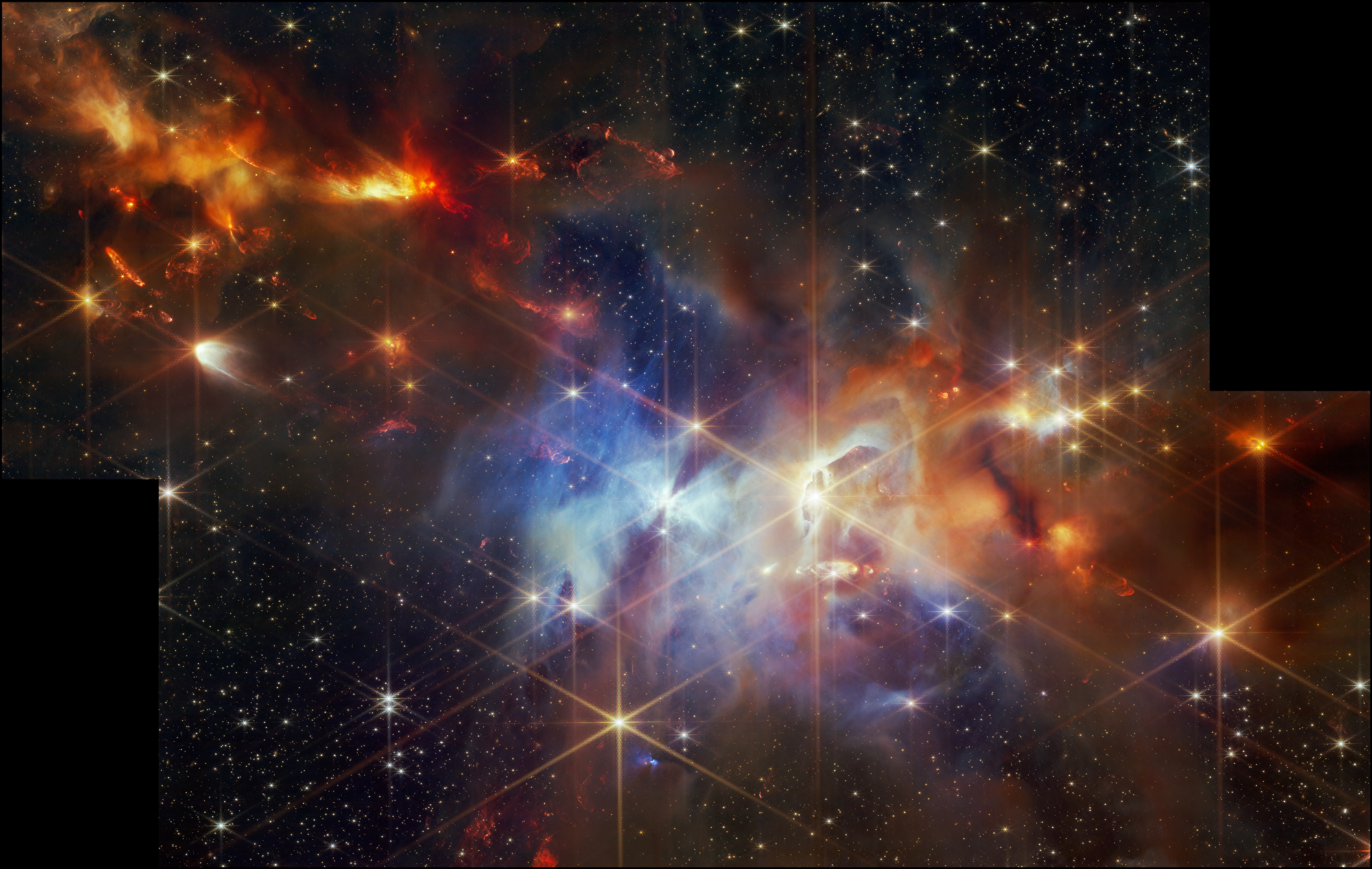Framework for Heliophysics Education
Big Idea 3.3
Our Sun, like all stars, has a life cycle.
The Sun goes through both short-term and long- term cycles. In the short term, every 11 years or so, the Sun's magnetic field completely flips. This is called the solar cycle. During solar maximum, when the magnetic fields are the most unstable, solar activity increases, intensifying the solar wind, causing space weather. Solar maximum can easily be observed by counting the number of sunspots. In the long term (billions of years), the Sun, like all stars, has a life cycle. Near the end of its nuclear burning stage, the star expels most of its outer material until only the hot core remains, which then settles down to become a white dwarf. That expelled outer material, primarily made of gas, is called a planetary nebula, which drifts through space, and one day, could become part of a new star, beginning the cycle again.
In this image of the Serpens Nebula from NASA’s James Webb Space Telescope, astronomers found a grouping of aligned protostellar outflows within one small region (the top left corner). Serpens is a reflection nebula, which means it’s a cloud of gas and dust that does not create its own light, but instead shines by reflecting the light from stars close to or within the nebula.
Topics: nuclear fusion, solar cycle, stellar evolution, sunspots
NGSS: PS1, LS1, ESS1
Image Credits: NASA, ESA, CSA, K. Pontoppidan (NASA’s Jet Propulsion Laboratory) and J. Green (Space Telescope Science Institute).
Heliophysics Resource Database
Use the guiding questions above to explore resources at each level or go directly to our database to search for resources by level, NGSS performance expectation, topic, and mission.
Resource Database




